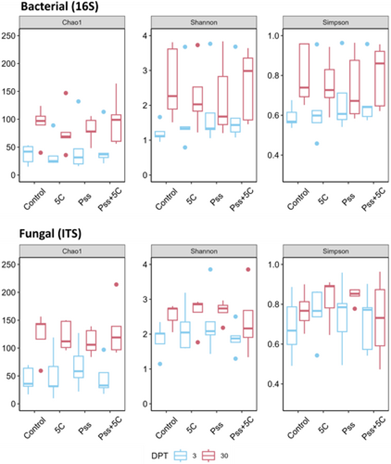2026-W16 How do bacteriophages shape microbial communities in plant environments?
Job Overview
-
Date PostedOctober 23, 2025
-
-
Expiration dateNovember 22, 2025
-
Job Description
PROJECT HIGHLIGHTS
- Explores the ecological role of naturally occurring phages in shaping plant microbial community;
- Combines evolutionary experiments, metagenomics, and transcriptomics to study phage–microbe interactions;
- Generates knowledge to support sustainable microbiome-based disease management in crops.
Overview
The plant microbiome, particularly in the phyllosphere (aboveground surfaces) and rhizosphere (rootassociated zone), plays a vital role in plant health, nutrient cycling, and disease resistance [1]. However, little is known about the ecological and evolutionary pressures shaping microbial community dynamics in these environments [2]. Bacteriophages, viruses that infect bacteria, are increasingly recognised as key drivers of microbial diversity and evolution, yet their influence in plantassociated environments remains poorly understood [3].
Our recent study showed that applying a phage cocktail to cherry leaves and shoots did not significantly impact microbial diversity (Figure 1) [4]. However, it remains unclear how naturally occurring phages shape microbial community structure and function in planta [5].
This project aims to investigate how natural phage populations influence microbial community composition, diversity, and function in the phyllosphere and rhizosphere. Using metagenomic and ampliconbased microbiome sequencing, we will characterise bacterial and viral communities across multiple crop species and environmental conditions [6]. Evolutionary experiments in controlled microcosms will be used to track phage–bacteria coevolution over time [7]. In parallel, metabolomic and transcriptomics will identify bacterial and viral genetic factors that mediate phage susceptibility and resistance in plant pathogenic bacteria, focusing on phage receptors and antiviral defence systems [8].
This research will provide new insights into the ecological roles of phages in plant environments and the evolutionary mechanisms that maintain microbial diversity [9]. The findings will inform sustainable plant microbiome management strategies and contribute to a broader understanding of viral ecology, aligning with the NERC remit on biodiversity, microbial resilience, and ecosystem function [10].
Figure 1. Alpha diversity indices of bacterial and fungal communities from cherry leaves sampled 3 and 30 days after treatment (DPT). The treatments were Pseudomonas syringae pv. syringae 9097, phage cocktail 5C, Pss combined with phage cocktail 5C, and a control. Diversity was evaluated using three indices: Chao1, estimating the total number of species per sample; Shannon’s index, reflecting community diversity (higher values indicate greater diversity); and Simpson’s index, reflecting community evenness (higher values indicate a more even community). Data adapted from Rabiey et al., 2025 [4].

Case funding
This project is not suitable for CASE funding
Host
- University of Warwick
Theme
- Climate and Environmental Sustainability, Organisms and Ecosystems
Supervisors
Project investigator
- Mojgan Rabiey, Mojgan.rabiey@warwick.ac.uk
Co-investigators
- Richard Puxty, R.Puxty@warwick.ac.uk
How to apply
Each host has a slightly different application process.
Find out how to apply for this studentship.
All applications must include the CENTA application form.
Choose your application route
- Does the diversity of microbial communities change under phage pressure?
Leaf and soil samples will be collected from selected crop species. Phages will be introduced into these samples, and at least six generations of evolution will be conducted. 16S and ITS rRNA amplicon sequencing, along with virome sequencing, will be used to catalogue resident bacterial and fungal ASVs and to identify bacterial and fungal pathogens, as well as phage communities, before and after phage-driven evolution. - Do culturable microbes isolated under phage pressure affect pathogens and plants differently? To investigate the influence of phages on microbial communities and their potential for pathogen suppression, bacteria, fungi, and phages will be isolated from the samples. Their antagonistic activity against pathogens will be tested both individually and as microbial consortia.
- How do phages alter leaf chemical composition? Collected leaf samples will be analysed using untargeted metabolomics and transcriptomics to identify unique chemical signatures and gene expression profiles resulting from phage exposure.
Further details and How to Apply
We are not carrying out experiments on organisms that necessitate ethical or other types of approvals or licenses, other than necessary APHA compliance. There is no genetic or biological risk, as all bacteria are sourced directly from the UK natural environment. There are no plans to release genetically modified organisms during this project. This work is approved by the UoW under existing genetic manipulation and biological safety committee project reference 456.
For any enquiries related to this project please contact Mojgan Rabiey, Mojgan.rabiey@warwick.ac.uk.
To apply to this project:
- You must include a CENTA studentship application form, downloadable from: CENTA Studentship Application Form 2026.
- You must include a CV with the names of at least two referees (preferably three) who can comment on your academic abilities.
- Please submit your application and complete the host institution application process via: https://warwick.ac.uk/fac/sci/lifesci/study/pgr/studentships/nerccenta/ University of Warwick projects will be added here: https://warwick.ac.uk/fac/sci/lifesci/study/pgr/studentships/nerccenta/studentships/ and application guidance is at the bottom of this page. Complete the online application form – selecting course code P-C1PB (Life Sciences PhD); from here you will be taken through to another screen where you can select your desired project. Please enter “NERC studentship” in the Finance section and add Nikki Glover, phd.lifesciences@warwick.ac.uk as the scholarship contact. Please also complete the CENTA Studentship Application Form 2026 and submit via email to phd.lifesciences@warwick.ac.uk. Please quote 2026-W16 when completing the application form.
Applications must be submitted by 23:59 GMT on Wednesday 7th January 2026.
you are here:
Projects > 2026-W16 How do bacteriophages shape microbial communities in plant environments?




